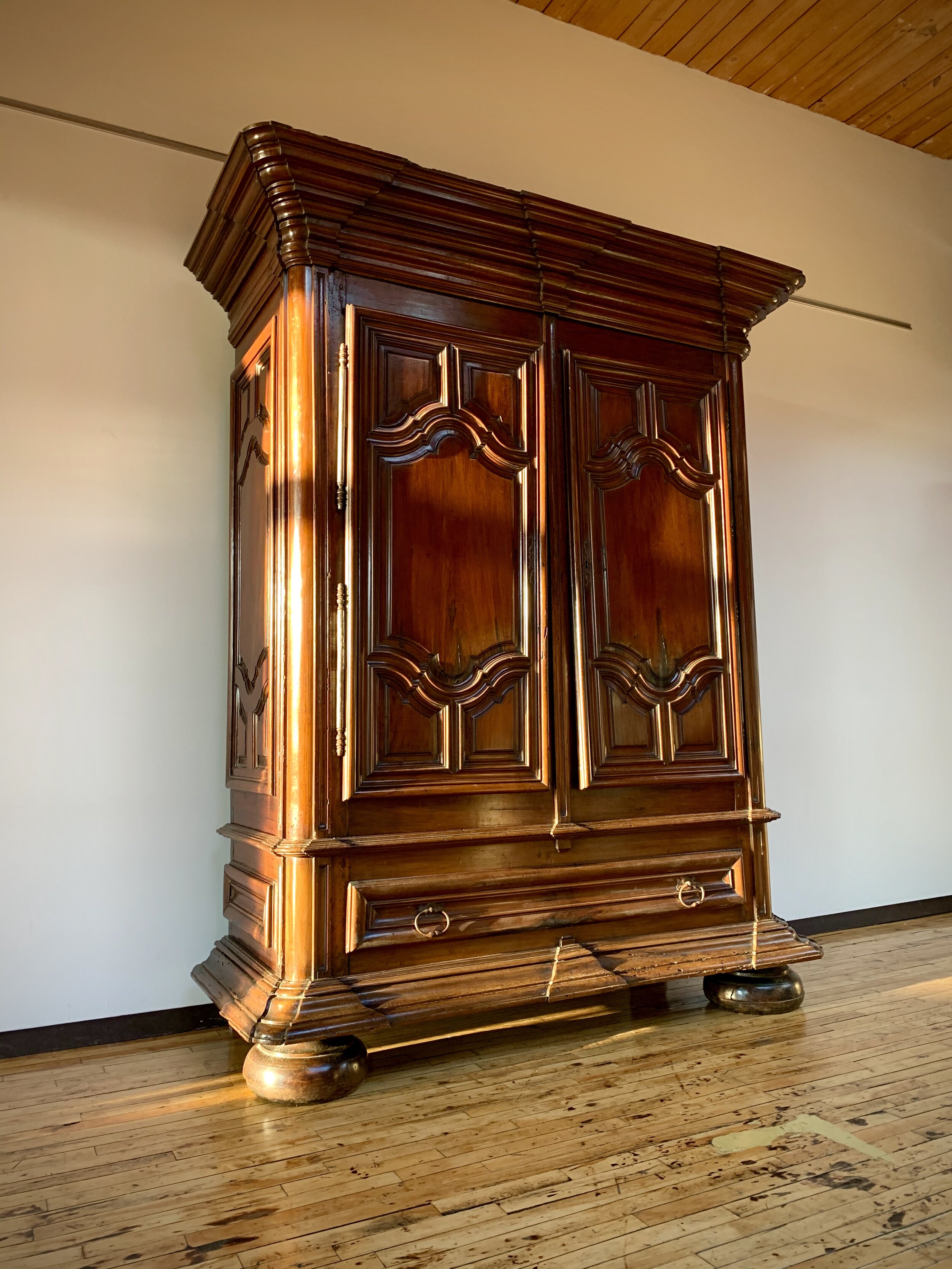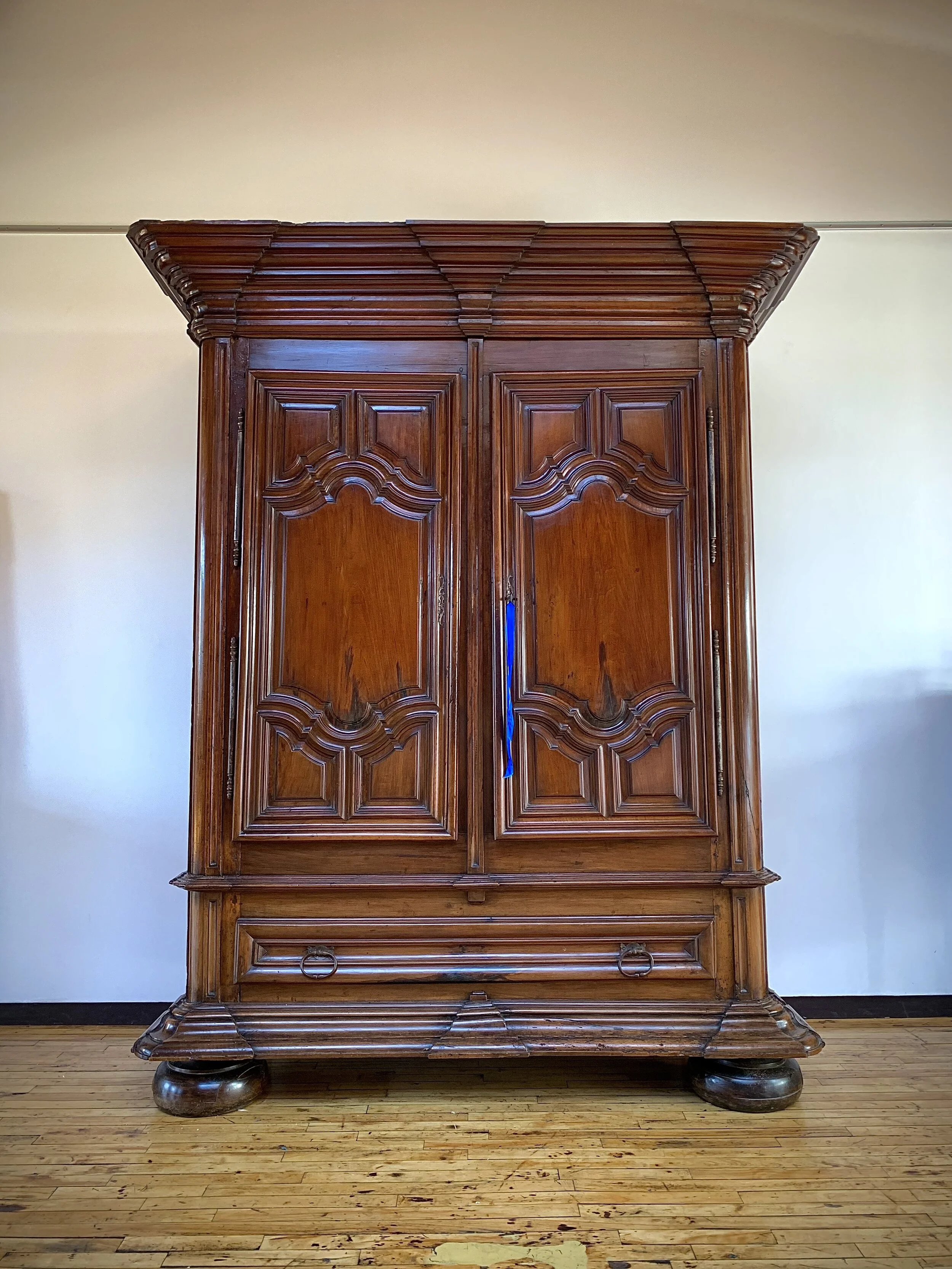




Your Custom Text Here
(Extensive YouTube Presentation Link)
This walnut armoire from the Périgord region was selected for its equivalence with the armoire Périgourdine in the Château de Montbazillac; classified a French Historic Monument. These types of armoires are often dated with ambiguous term “vers 1700,” in French, or around the year 1700. This is because the massive, rectilinear, architectural design, resting on bun feet, and with Louis XIV style panelling, belongs stylistically to the final quarter of the 17th century. This model, however, was made well into the first quarter of the 18th century. Both of these armoires, however, have fixed posts between the doors, a design element which disappears early on in the 18th century.
The side posts of the gallery’s armoire extend upwards into a remarkably molded cornice which is more elaborate, however. The sides of the Montbazillac armoire are decorated with diamond point panels whereas the gallery’s piece is decorated with panels that are identical to the doors. The bottom panel of doors on the chateau’s armoire are rectangular, and the bottom panels on the one here are a reflection of its upper panels.
These differences are the result of different makers possibly creating these emblematic models a decade apart. They also amount to the decor variability of custom ordered pieces at the time.
Many thanks to the administrator of the French period furninture reference site Meubliz.com for his commentary and expertise.
Myers & Monroe, LLC
(Extensive YouTube Presentation Link)
This walnut armoire from the Périgord region was selected for its equivalence with the armoire Périgourdine in the Château de Montbazillac; classified a French Historic Monument. These types of armoires are often dated with ambiguous term “vers 1700,” in French, or around the year 1700. This is because the massive, rectilinear, architectural design, resting on bun feet, and with Louis XIV style panelling, belongs stylistically to the final quarter of the 17th century. This model, however, was made well into the first quarter of the 18th century. Both of these armoires, however, have fixed posts between the doors, a design element which disappears early on in the 18th century.
The side posts of the gallery’s armoire extend upwards into a remarkably molded cornice which is more elaborate, however. The sides of the Montbazillac armoire are decorated with diamond point panels whereas the gallery’s piece is decorated with panels that are identical to the doors. The bottom panel of doors on the chateau’s armoire are rectangular, and the bottom panels on the one here are a reflection of its upper panels.
These differences are the result of different makers possibly creating these emblematic models a decade apart. They also amount to the decor variability of custom ordered pieces at the time.
Many thanks to the administrator of the French period furninture reference site Meubliz.com for his commentary and expertise.
Myers & Monroe, LLC